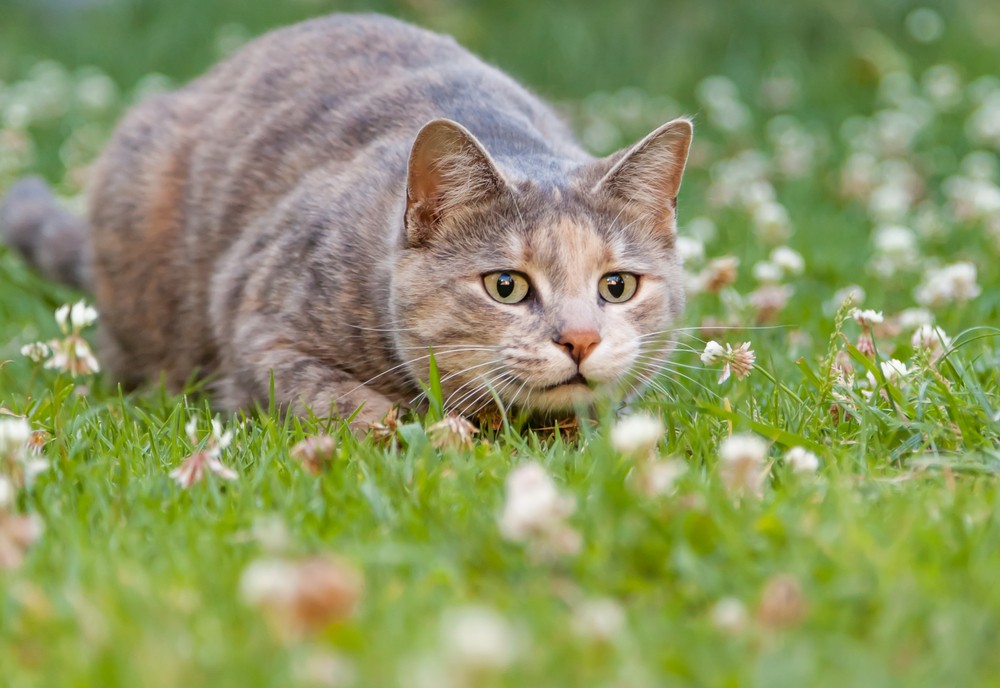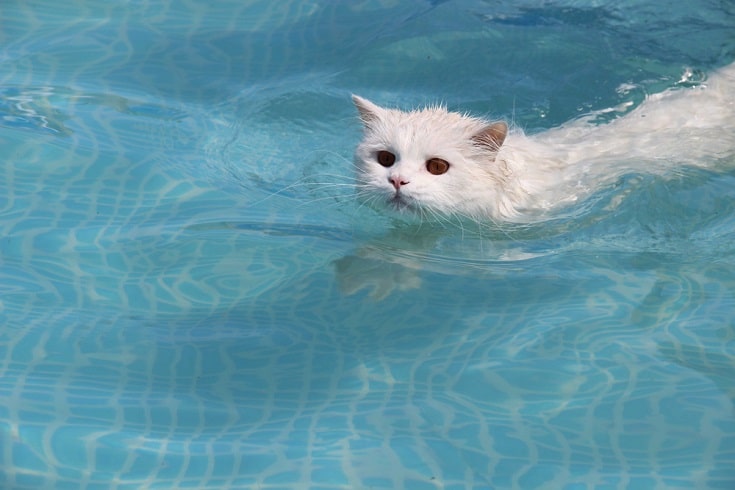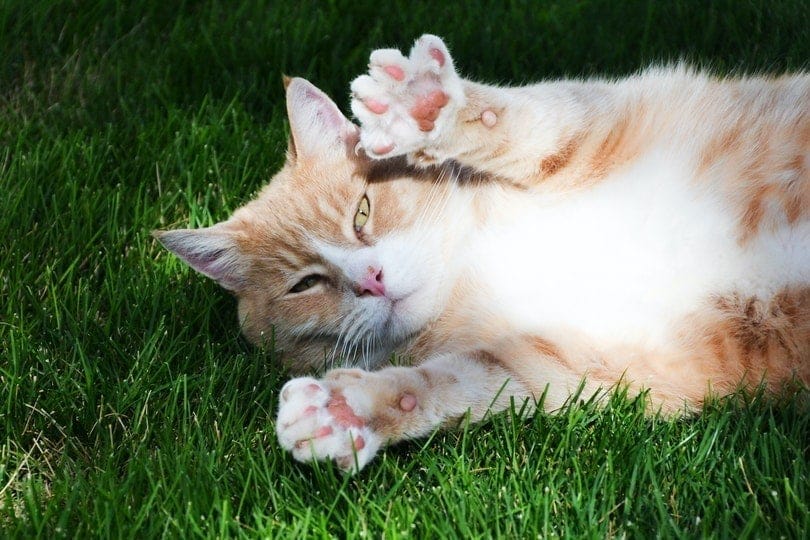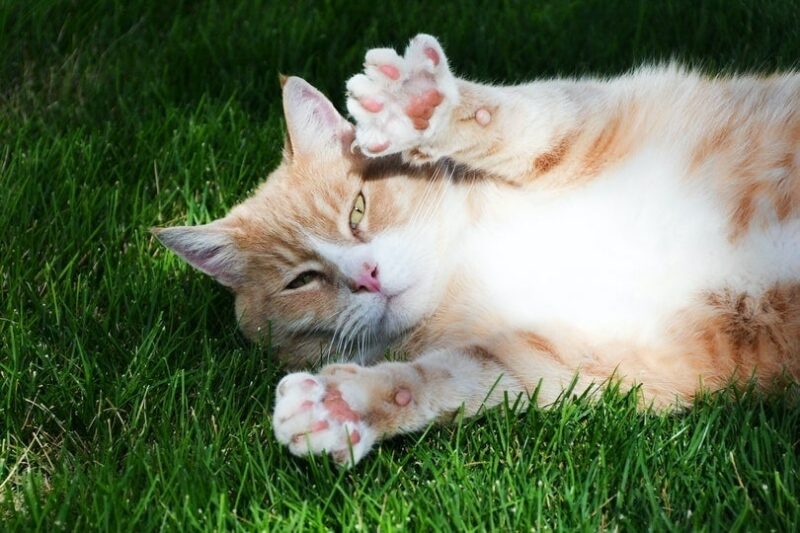It’s not as apparent as the webbing on the feet of a duck or a frog, but cats do indeed have webbing between their toes. It can be difficult to see generally, thanks to all their fur. If your cat doesn’t mind, you can have a gentle feel between their cute toe beans to check if we’re telling the truth.
Failing that, if your cat doesn’t permit toe inspections, you could wait until your cat stretches. They tend to stretch out their toes, and you can get a good look. Is this webbing a genetic mistake, or does it serve a purpose? After all, you might have lived with your cat for years and never noticed. Keep reading to find out.
The 3 Main Reasons Why Cat’s Feet Are Webbed
Cats share 95% of their DNA with a 1,000-pound tiger, so it makes sense that they have something in common. For example, the Sumatran tiger has almost fully webbed feet. The webbing is technically interdigital skin, a skin flap between the toes.
This so-called “webbing” is of different lengths in individual cats and different breeds. But why does your cat, who spends most of their time snoozing on the sofa, need webbed feet?
1. Stalking Prey
Cats are skilled in the art of stalking, catching, and killing prey, and some of that success is due to their paws, which provide traction and act as shock absorbers for tendons, bones, and ligaments. Their claws are deadly weapons that they use to hold prey, but their webbed feet also play an essential role, especially in the wild.
The webbing between their toes allows them to spread their toes apart, increasing surface area. This can result in spreading their weight out to make less noise and adapting to different terrains. This allows them to be stealthier hunters.

2. Efficient Swimmers
Cats must be able to hunt and escape in different environments to survive. Just because your experience is with a water-hating kitty doesn’t mean they can’t swim if they need to.
The webbing improves propulsion through the water and is more prominent in water-loving felines such as fishing cats. The webbing is particularly helpful for big cats in the wild that have to catch their food in areas with water.

3. Balance & Agility
Cats are graceful and quiet; watching them jump from a great height and make little to no sound when they land is impressive. Their partially webbed feet help them land on the soggy, muddy ground without sinking in.
It can aid with tree climbing when cats stretch their feet wider to get a good grip and deal with different textures underfoot. Their webbed feet help with their agility, which you might notice more if you have an outdoor cat that likes to explore.

Final Thoughts
Your cat shares more with their big cat cousins than you might have realized. Webbed feet might not be as handy now because your cat doesn’t need to hunt through water or muddy terrain, but if there’s ever a need, you know your cat is equipped with the tools. Swimming is probably a skill it won’t have to use, but it makes you think about what other secrets and hidden abilities our cats keep from us.
Featured Image Credit: Kevin Bidwell, Pexels











